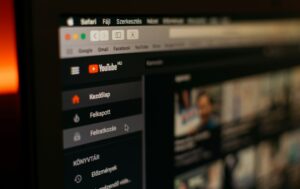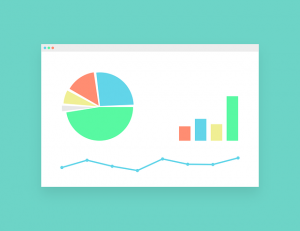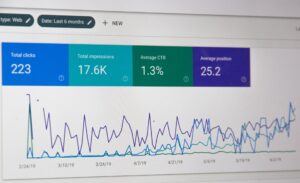by Kevin Lewis | Oct 3, 2025 | Software, Technology
Portable Document Format files often lock useful information behind layout, fonts, and embedded images. Markdown offers a clean, portable way to move that information into writing tools, wikis, documentation systems, and static site generators. Convert PDF to Markdown helps teams edit faster, version content with source control, and keep documents small and readable. The key is to protect structure while stripping away display-only elements. That means focusing on headings, paragraphs, links, lists, and tables, and treating everything else as supportive rather than central. With a clear process, you can turn a rigid print artifact into flexible text that fits modern publishing workflows, and the steps to do so start with understanding how PDFs store content.
Why Markdown works well for long-term editing
Markdown stores meaning, not decoration. A single hash mark shows a heading. Asterisks show emphasis. Code fences preserve examples. Plain text files travel well across systems and invite version control with standard tools. Teams can compare revisions line by line and audit changes over time. This keeps knowledge transparent and portable. The format also compiles into many outputs. The same Markdown source can become a website page, a help center article, or a print-ready document. If your department maintains policy manuals or technical guides, a Markdown pipeline saves time and reduces the chance of layout mistakes creeping in during handoffs.
Understanding the limits of PDF content
PDFs store text as positioned glyphs. A paragraph may appear as many fragments rather than a single flow. Columns, footers, and headers sit in the same coordinate space as the main body. Diagrams can contain text that is not selectable. These traits explain why a naïve copy-paste breaks paragraphs, merges words, or loses reading order. A good conversion plan accounts for this. It reads the document’s structure, not its page coordinates. Where the PDF contains scanned images, text does not exist at all until optical character recognition creates it. Recognizing these limits makes conversion smoother and lowers clean-up time.
A stepwise method that preserves structure
Start by classifying the source. If the PDF is digitally generated from a word processor, text extraction will likely succeed. If the file is a scan, begin with optical character recognition. Modern engines handle mixed languages and columns with high accuracy. Once text exists, pass it through a parser that recognizes headings, paragraphs, and lists. Heading detection often uses font size and weight patterns. You can map the largest repeated style to #, the next to ##, and so on. Paragraph detection groups nearby lines that share styles and spacing. Convert lists by spotting leading bullets or numerals. Keep line wraps out of paragraphs; let the editor handle wrapping.
Next, capture links and images. Many PDFs include live hyperlinks. Move them to Markdown with the standard [text](url) notation. For images, save them to a folder and insert references with . Use short, descriptive alternative text so readers know what the image conveys. If a figure contains useful text, consider adding a caption or a short note below to carry that meaning forward.
Tables require care. PDFs often draw lines and place text boxes within cells. A good extractor reads the grid or uses heuristics to detect columns by coordinates. Rebuild tables in Markdown using pipes and hyphens. Keep widths modest to protect readability in text editors. If the table is complex or spans many columns, consider exporting it to a spreadsheet first, then pasting a simplified version back into Markdown with only the most important fields.
Handling footnotes, references, and metadata
Academic and legal PDFs use footnotes and cross-references heavily. You can retain meaning by converting footnotes into reference-style notes at the end of the file, linking with markers such as [^1]. Page numbers generally do not matter in Markdown because text reflows, but section labels and figure numbers do. Carry them over where they help orientation. Keep document metadata—title, author, date—in a short front matter block at the top if your toolchain supports it. That keeps important context visible to readers and machines.
Quality checks that save time later
After conversion, run through a short checklist. Confirm that headings decrease in sensible steps and that no section jumps from level one to level four without a level two on the path. Search for double spaces caused by broken line merges. Verify that hyphenated line wraps inside words did not survive the move. Check that special characters, math, and non-Latin scripts appear correctly. Where the PDF used small caps or special fonts to signal acronyms or product names, standardize them in plain text for clarity.
Questions that help guide the approach
What parts of the document must keep their visual identity, and what parts only need meaning? If the answer is “almost everything needs meaning only,” Markdown fits well. How often will the team update the text? Frequent revision favors a Markdown workflow. Do readers need figures for full understanding, or can a short description cover the same ground? When figures carry central meaning, store them and reference them clearly so they remain part of the narrative.
Common pitfalls and how to avoid them
One pitfall is converting page headers and footers into body text. Mark them and remove them early. Another is leaving hard line breaks inside paragraphs, which harms search and editing. A third involves lists that lose their markers during extraction; check that each item starts with a dash, a plus, or a numeral. Finally, remember that Markdown has many flavors. Pick one and stick to it so editors and compilers behave predictably.
A short note on automation and maintenance
Once you settle on a process, document it. Record how you map styles to heading levels, where you store images, and how you handle tables. A repeatable method supports team adoption and reduces rework. Over time, you can build small scripts to standardize quotes, dashes, and emphasis; to validate links; and to keep front matter fields consistent. The result is a durable pipeline from static PDF to clear, portable text that fits modern publishing without friction.
by Kevin Lewis | Jul 28, 2025 | Technology
The television screen did not disappear when people picked up phones and tablets; it learned to speak the language of the network. Internet Protocol Television, often shortened to IPTV, routes shows, films, and live channels through the same internet pipes that carry email and video calls. Viewers notice the change every time they pause a live match, start a series on the train and finish it on the sofa, or search for a niche documentary that never aired on a local channel. What explains the rapid rise? The answer blends convenience, content breadth, smarter pricing, and steady advances in networking. That mix leads naturally to one central idea: Atlas Pro max Internet Protocol Television wins audience time because it meets modern viewing habits better than legacy broadcast and cable. With that premise in mind, it helps to look first at how convenience changed the game.
Convenience Rewrites Prime Time
Traditional schedules once dictated when households gathered for a favorite program. Internet delivery flips that model. On-demand libraries let people watch at 7:13 p.m., 11:02 p.m., or 6:30 a.m., and the experience remains the same. Catch-up features rescue missed broadcasts. Start-over tools reset a live program after a late commute. Time controls once limited to set-top recorders now sit inside the stream itself, so the viewer carries them from device to device. As a result, prime time becomes personal time.
That convenience scales beyond time to place. The same account follows the viewer across a television, a laptop, a phone, and a tablet. Commuters fill small gaps in the day with short episodes and continue on a larger screen without losing their spot. This continuity rewards services that invest in seamless apps, fast logins, and stable session handoffs, which in turn keeps viewers from returning to linear-only offerings.
Content Breadth Meets Niche Tastes
Cable bundles concentrated on a fixed lineup shaped by carriage deals. Internet distribution opens long shelves. Providers can surface international channels, regional news, specialized sports, and language-specific programming that once struggled to secure placement. A parent who grew up abroad can stream children’s shows from home; a cinephile can chase festival films that never reached local theaters. Wider catalogs attract audiences who felt underserved, and they stick around because recommendation engines keep feeding their interests.
The long shelf also helps live events. Pop-up channels for tournaments or award shows appear for a few weeks and vanish when the spotlight fades. That flexibility keeps the guide fresh and allows quick responses to cultural moments. Viewers learn to check their app first because it is more likely to have something timely.
Pricing That Feels Rational
Bundles built for everyone often included many channels a household never watched. Internet Protocol Television lets providers price smaller packages, add premium segments for a season, and pause service when users travel. Transparent monthly plans with no long-term lock-in reduce friction. The ability to add a sports tier for three months, then switch to a film pack, respects household budgets and interests. As a result, churn can happen, but so can return; users come back when a new slate arrives because reactivation takes a minute.
Technology Makes Streams Feel Native
Fears about buffering once held back streaming television. Broadband speeds improved, compression codecs matured, and content delivery networks grew closer to neighborhoods. Adaptive bitrate streaming now keeps pictures stable as network conditions change. High frame rate sports, 4K shows, and spatial audio move over ordinary home connections with minimal hiccups. The technology fades into the background, which is exactly the point. When quality feels native, people stop asking whether a program arrived through a satellite or a fiber link and simply watch.
Personalization Without Complexity
Viewers like choice until menus overwhelm them. Modern services reduce clutter with profiles, watch-later lists, and clear “continue watching” rows. Subtle cues—thumbnail badges, “live now” flags, or countdown clocks before a match—strip away guesswork. Voice search finds a player or a director in seconds. The best interfaces lead users to a decision quickly, which turns short breaks into actual viewing time. Every small design win adds up to stronger daily use.
Trust and Rights Management Matter
Rising popularity also reflects progress on security and rights protection. Content owners need confidence that streams will not leak widely. Solutions such as watermarking, conditional access, and flexible digital rights rules allow legitimate household use while discouraging piracy. As studios increase first-run and day-and-date releases over internet channels, users gain more high-value content, which reinforces the shift.
Social Viewing Returns in a New Form
People enjoy sharing shows, even when they watch in separate homes. Synchronized playback, live chats around matches, and easy clip sharing restore that social feel. Sports fans react together, families split across cities pick a Friday movie, and communities form around niche channels. Internet protocols make those features straightforward, which strengthens loyalty and word-of-mouth.
Sustainability Gains a Place in Decision-Making
Energy use influences technology choices. Modern streaming architectures can scale up during peak demand and down during quiet hours. That elasticity can reduce wasted capacity compared with always-on legacy networks. Providers that publish efficiency metrics and invest in greener data centers give households and advertisers an additional reason to support the format.
So Why the Surge?
Put simply, Internet Protocol Television aligns with how people actually live: irregular schedules, mobile viewing, eclectic interests, price awareness, and a desire for quality that just works. The format integrates advances in networking, software design, and content licensing into a package that respects time and attention. As the next sections of this series explain, those same traits translate into concrete advantages, a strong outlook, and notable regional growth stories, including France. The most immediate takeaway is straightforward: when the viewing experience becomes flexible, clear, and reliable, audiences follow—and they tell their friends to do the same.
by Kevin Lewis | Jul 7, 2025 | Technology
The traditional television socket is losing pride of place in German living rooms. Viewers now expect the same flexibility from television that they already enjoy with music or podcasts: instant access, personal recommendations, and the ability to resume a programme on any screen. Internet Protocol Television (IPTV) answers those expectations by routing live and time‑shifted channels through the household broadband line—no satellite dish, coax cable, or apartment‑block contract required. As broadband speeds climb and prices fall, IPTV subscription numbers keep climbing. Ampere Analysis even links a recent 40 percent drop in cable pay‑TV accounts to households switching their allegiance to IPTV and over‑the‑top streaming—proof that the medium is winning viewers, not just borrowing them temporarily.
Changing Viewing Habits Across the Country
German families once organised their evenings around broadcast slots, yet on‑demand catalogues now set the rhythm. The “7‑day replay” functions offered by popular German IPTV platforms such as IPTV Deutschland and Deutsche Telekom’s MagentaTV allow parents to catch Saturday’s crime drama after the children’s bedtime, while Bundesliga fans can restart a match they joined late. This elasticity reshapes viewing from a linear appointment to a personal timetable. Younger households especially value the ability to swap seamlessly between the living‑room Smart TV, a tablet on the balcony, and a handset on the train ride home. Because IPTV services authenticate users rather than devices, the subscriber’s entire channel bouquet follows them wherever a reliable connection exists.
Strong Broadband Lays the Groundwork
Fast fibre and VDSL roll‑outs underpin this shift. Deutsche Telekom’s 2024 annual filing reports that more than ten million premises can already order a gigabit‑capable fibre line, and the company alone added 311 000 new TV customers last year. Competing wholesale networks—ranging from regional city carriers to the expanding open‑access platform of Deutsche Glasfaser—drive similar upgrades. While speed grabs the headlines, greater upstream capacity proves equally important: time‑shifted television requires agile two‑way traffic so that electronic programme guides, targeted advertising, and network PVR functions respond instantly. With an average downstream rate above 100 Mbit/s now commonplace in German towns, buffering wheels have become rare.
A Wide Range of Channels and Apps
Cable historically offered more foreign‑language packages than terrestrial reception, yet IPTV surpasses both by combining national free‑to‑air services with niche bouquets—Italian football channels next to Japanese animation for instance—and quick links to third‑party apps. Providers integrate Netflix and RTL+ log‑ins directly within its screen guide, turning the main menu into a single search window instead of a patchwork of HDMI inputs. For public broadcasters ARD and ZDF, the arrangement means their Mediathek apps sit beside Amazon Prime rather than behind a Smart TV manufacturer’s submenu. As a result, viewers sample national journalism and regional culture while surfing an essentially global catalogue.
Personalisation and Interactivity Without the Buzzwords
Because IPTV passes through an IP stack, providers gather granular yet anonymised statistics: which household rewinds local news, who watches children’s content in the afternoon, and how many seconds the user spends reading a synopsis before hitting play. Instead of shouting generic promos during every ad break, the service can insert tailored trailers or permit customers to swap linear interruptions for a higher ad‑free tier. Interactive sports features also flourish: alternative commentary tracks, multi‑angle replays, and real‑time voting during talk shows. None of these perks demand extra hardware—just the set‑top‑box or app already running on the broadband connection.
Transparent Pricing Models
Cable invoices in Germany traditionally passed through rent, hiding TV fees inside the “Nebenkosten” maintenance column. A legislative change phased in from July 2024 stops landlords from automatically billing tenants for those contracts. Millions now see the separate cost of cable for the first time—and many decide against renewing it. IPTV plans appear straightforward by comparison: one subscription, cancellable monthly, with add‑on packs clearly itemised. Several providers offer rotating bundles so subscribers can activate premium sports only during the football season, then downgrade for summer savings. Competitive broadband prices across Germany’s 1 770 internet service providers further sharpen the deal.
Device Compatibility and Ease of Setup
Unlike satellite installations that require a south‑facing balcony or the permission of a building association, IPTV set‑top‑boxes arrive by courier and self‑install in minutes. Smart‑TV owners often skip the box entirely, downloading an app and pairing a compact Bluetooth remote. Because the stream travels over standard IPv4 or IPv6, moving flat within Germany rarely interrupts service. For students or young professionals who relocate frequently, the promise of continuity without an engineer visit removes a significant barrier. Even in single‑family homes, many use IPTV as a secondary feed on floors not reached by the existing aerial.
Local Content Gets a Digital Boost
Regional broadcasters benefit too. Traditional cable depended on carriage negotiations that favoured high‑audience channels. IPTV line‑ups can include smaller public‑access stations at negligible distribution cost, bringing city council meetings in Cologne or carnival parades in Mainz to any fibre‑connected town nationwide. Because the bandwidth is unicast rather than limited transponder space, niche culture no longer risks being squeezed out. For Germany’s multilingual communities, add‑on packs in Turkish, Polish, Arabic, or Russian expand representation without displacing domestic programmes.
Security and Consumer Protection
Germany enforces strict data‑protection rules, and reputable IPTV suppliers abide by DSGVO requirements. Encryption protocols guard the video stream from interception, while parental controls let guardians set PIN codes for adult content or limit viewing time. Industry certification—such as TÜV data audits—feeds consumer trust. In a market where illegal IPTV clones frequently make headlines, legitimate operators highlight their compliance, reliable picture quality, and legal recourse if equipment fails.
Looking Ahead for German IPTV
Forecasts from The Business Research Company suggest the global IPTV sector will reach roughly €170 billion this year, riding a compound annual growth rate above 16 percent. Germany’s share rests on firm foundations: widespread gigabit targets, renters free to choose their own reception path, and a media culture that prizes choice. Analysts already count about ten million IPTV households in the Federal Republic, up twenty percent on the previous year. As the country heads for universal fibre coverage by the early 2030s, IPTV looks set not only to replace legacy cable but to redefine what German audiences expect from television altogether.
by Kevin Lewis | May 31, 2025 | Technology
Global video traffic already accounts for a sizable share of internet bandwidth and, by extension, electricity use. As viewing habits shift from broadcast towers to data centers, concerns arise about the environmental footprint of on-demand streaming. Atlas Pro max, however, offers a set of tools and practices capable of trimming energy consumption while still delighting audiences.
Efficient Codecs and Bitrate Management
The bulk of streaming power draw occurs during encoding and decoding. New compression standards slash data volumes by applying advanced prediction, vectorization, and neural interpolation. Traffic shaping then matches bitrate to actual screen size and motion complexity rather than applying a fixed ceiling. Less data sent means fewer router cycles and reduced cooling demand in transit networks.
Renewable-Powered Edge Nodes
Placing cache servers near users curtails long-haul traffic, yet those servers need electricity as well. Operators now deploy micro-data centers that run on onsite solar arrays supplemented by battery storage. During peak sunshine, these nodes pre-fetch popular titles for evening viewing. The approach shifts energy use away from fossil-fuel-dominated night-time grids.
Demand-Response Streaming
Grid operators sometimes request lower consumption during critical periods. IPTV middleware can comply automatically by nudging video quality down a notch, an adjustment many viewers hardly notice on smaller screens. In return, utilities offer discounted rates that providers reinvest in renewable certificates or energy-efficiency upgrades.
Device Longevity Through Software Updates
Constant hardware churn contributes to electronic waste. Because IPTV relies on standardized protocols, manufacturers can push new features through firmware upgrades instead of new boxes. A set-top unit bought last decade still handles modern streams once a software patch enables updated codecs. Extending hardware lifespans keeps plastic, rare earth metals, and circuit boards out of landfills.
Data-Driven Carbon Accounting
Accurate measurement underpins meaningful improvement. Advanced analytics track watt-hours per minute streamed, broken down by region, codec, and time slot. Providers publish transparent reports, letting consumers weigh environmental footprint alongside price and content library when choosing services. Early adopters of such disclosure often see subscriber loyalty rise, proving that sustainability can coexist with commercial success.
Community Impact
Energy savings scale beyond individual households. Municipal broadband cooperatives that host IPTV head-ends locally keep heat output near facilities that can capture it for district heating. Waste warmth from servers heats water for swimming pools or greenhouses, closing resource loops that would be impossible with satellite downlinks alone.
A Responsible Path Forward
Television will always consume energy, yet the shift to IP delivery creates levers for meaningful reductions. Codec innovation, renewable caches, adaptive quality, and extended hardware lifecycles together carve a lighter footprint without sacrificing convenience. By adopting these measures, the streaming industry turns environmental responsibility from an afterthought into a standard feature—one frame at a time.
by Kevin Lewis | Apr 30, 2025 | Technology
Setting Priorities Before You Sign Up
The Spanish market teems with offers that promise entire channel line‑ups at almost no cost, yet some lack legal licensing or technical support. Viewers should first list their must‑watch items—perhaps La Liga, kids’ programming, or international news—and compare which legitimate providers carry them. Understanding personal viewing habits prevents overpayment and reduces temptation to try unauthorized services that may disappear overnight.
Legal Markers to Check
Every reputable IPTV España platform operating in Spain registers with the National Commission on Markets and Competition (CNMC). Its public database lists authorized audiovisual service providers and their parent companies. A quick lookup confirms whether a flashy website belongs to a certified operator or a shell entity. Genuine providers also display VAT numbers and customer service phone lines staffed during local business hours. Absence of these markers warrants caution.
Trial Periods and Device Compatibility
Movistar+, Orange TV, and several regional carriers grant seven‑ or fourteen‑day trials. Use this window to verify picture quality on your specific setup—older smart TVs may require a separate set‑top box, while newer models run Android TV apps natively. Check whether simultaneous log‑ins fit household needs: a family of five often prefers at least three concurrent streams so children can watch cartoons while parents enjoy crime drama. Testing during peak hours, such as Sunday evening film slots, reveals whether bandwidth throttles under load.
Decoding Total Cost
Introductory discounts often look appealing, but pay attention to bills after month three. Some packages bundle fiber internet at a fixed rate, others hike fees once promotional credits expire. Calculate annual expenditure rather than focusing on the first invoice. Also note possible charges for 4K add‑ons or premium sports weekends. Transparent providers publish updated rate sheets online; archive snapshots via the Wayback Machine can help compare changes over time.
Security and Privacy
Sidestepping official services may risk more than legal penalties. Pirate IPTV apps sometimes install unsigned packages that request root access, creating back doors for ransomware. In contrast, established platforms undergo penetration testing and distribute software through official app stores. They also respect EU data rules, offering clear consent toggles for personalized ads. If you use a shared account, enable PIN codes on mature‑content profiles to protect minors.
Network Preparation
While Spain’s average fiber speed exceeds 300 Mb/s, Wi‑Fi bottlenecks inside the home can still cause buffering. Placing the router in a central hallway and updating firmware eliminates many streaming hiccups. Ethernet cabling provides the best stability for living‑room boxes, especially during 4K sports events that push sustained bitrates above 25 Mb/s. If cabling proves impractical, Wi‑Fi 6 mesh nodes extend coverage without drilling holes.
Customer Support Matters
Peak traffic often coincides with prime‑time drama finales. A support line that closes at 18:00 offers little help when pixels freeze at 22:30. Prioritize services with round‑the‑clock assistance and Spanish‑language agents. Community forums also reflect responsiveness: unanswered threads suggest limited staffing. Some operators integrate remote diagnostics, allowing technicians to read error logs immediately rather than scheduling onsite visits days later.
Ethical Considerations
Choosing licensed IPTV contributes to content creation budgets, sustaining Spanish cinema, regional journalism, and live sports. Piracy may seem victimless, yet lost revenue can shrink production slates or force layoffs. By subscribing through proper channels, viewers play a part in keeping media jobs local and maintaining program variety. This community benefit accompanies personal convenience and legal peace of mind.
Future‑Proofing Your Choice
With codecs such as AV1 gaining traction and 8K broadcasts looming, verify that set‑top boxes receive firmware updates regularly. Some contracts include device swaps every two or three years, keeping hardware current without extra charge. Cloud‑based interfaces mean new features—voice control, accessibility tweaks, predictive search—arrive automatically. Selecting a provider with a proven upgrade path shields you from premature obsolescence and unlocks tomorrow’s innovations the moment they roll out.
Parting Thoughts
Spain’s IPTV arena rewards informed decisions. A bit of research, an honest assessment of household preferences, and attention to service credentials will deliver years of seamless viewing. With fiber lines blanketing almost every population center, technical barriers shrink daily. What remains is a straightforward choice: back the platforms that respect both viewers and creators, and savor the broadest selection of entertainment ever available on the Iberian Peninsula.
by Kevin Lewis | Apr 14, 2025 | Technology
The convenience of IPTV extends far beyond your home TV. Thanks to mobile technology, users can keep up with French programming wherever they travel—during lunch breaks, commutes, or vacations. Below, we explain how to optimize IPTV for smartphones or tablets, ensuring smooth streaming and maximum flexibility.
Advantages of Mobile IPTV
A mobile IPTV app allows you to follow news updates, sports events, or ongoing series from any location with a reliable internet signal. This portability lets you use pockets of free time to stay informed or entertained. Instead of missing an important match while running errands, you can watch it live on your phone. For language learners, it transforms everyday downtime into opportunities to practice French comprehension.
Additionally, some users appreciate the convenience of setting up recordings or watchlists from their phone. That way, the content is queued up and ready when they return home to a larger screen.
Getting Started with the Right App
Step one involves downloading the official IPTV app recommended by your provider. You may find it in the App Store or Google Play, depending on your operating system. After installing, sign in with your account credentials. The features available—such as live TV, video on demand, or catch-up—depend on the provider’s specific app.
If your IPTV provider does not have a dedicated app, consider using a third-party IPTV player. Be sure it’s trusted, well-reviewed, and compatible with your subscription format (for instance, M3U playlists or portal-based logins).
Stream Quality and Data Management
Mobile devices often rely on Wi-Fi in the home, but you might be on the road with a 4G or 5G data plan. High-definition streaming can quickly consume large amounts of data. If your mobile plan is limited, switch to standard definition or even a lower resolution when away from Wi-Fi. Some apps let you pick the bit rate manually, which is helpful for controlling data usage.
Buffering or slow loading can occur in areas with weak signals. For best results, pause any other heavy data use on your phone—like downloads or updates—while streaming. When possible, connect to a stable Wi-Fi hotspot, especially if you plan a longer session like a film or sports match.
Tips for a Smooth Mobile Experience
- Use headphones: Better audio quality helps you catch details in dialogue or commentary, especially in noisy environments.
- Activate notifications: Some IPTV apps can alert you when a favored show airs or a live event begins.
- Download for offline: If the app supports offline viewing, pre-download episodes to watch later without data worries.
- Check for cast options: Many apps let you cast the content to a larger screen if you’re near a Chromecast or smart TV.
- Pay attention to battery: Video streaming can be power-intensive; keep a charger or power bank handy.
Ideal Scenarios for Mobile Use
- Commuting: On a train or bus ride, you might watch a recorded news bulletin or catch a drama episode.
- Lunch Break: Quickly scan a 15-minute highlights show about your favorite football team.
- Waiting Periods: Doctor’s offices or queues become less tedious when you can stream a short program.
- Travel Abroad: If your IPTV subscription allows, you can watch French channels from another country, though geoblocking rules may apply.
- Shared Household: If the main TV is in use, retreat to a tablet and continue watching your chosen content privately.
Choosing a Provider
Not all IPTV services optimize their apps for mobile usage. Look for features such as adaptive streaming (which adjusts quality based on your connection), a user-friendly interface, and the ability to store favorites or create watchlists. IPTV kopen is one example of a platform that frequently updates its offerings to work well across devices, though it is always wise to read up on user reviews and check compatibility.
Keeping It Secure
When accessing IPTV over public Wi-Fi, be mindful of security risks. A virtual private network (VPN) can encrypt data, protecting you from potential snooping on open networks. Make sure the IPTV app does not store your password in plain text. It is wise to use strong, unique credentials for each streaming service, especially if your subscription details include payment methods.
Concluding Thoughts
Tablets and smartphones unlock a new level of freedom with IPTV, letting you remain connected to French shows anytime, anywhere. While bandwidth and data limits require some forethought, modern app design and advanced network speeds have made mobile streaming highly practical.
Whether you want to stay updated on current affairs, indulge in a quick comedy episode, or cheer for your local sports team, IPTV on the go ensures the content you value fits smoothly into your day. Proper planning—choosing the right app, monitoring data usage, and having a stable connection—paves the way for a reliable, enjoyable viewing experience.

















